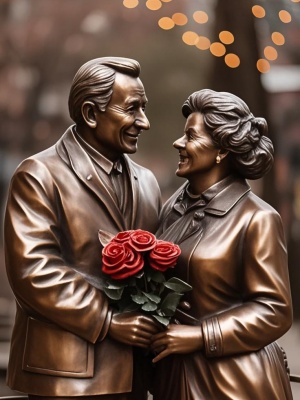The Art of Abstract Horse Sculpture: A Modern Interpretation of Equine Beauty
Introduction: The Allure of Abstract Equine Forms
Abstract horse sculpture represents one of the most fascinating intersections between traditional animal representation and modern artistic expression. These sculptures capture the essence of equine energy while allowing artists to explore form, movement, and emotion through unconventional shapes and materials. From gallery installations to public art pieces, abstract horse sculptures continue to captivate audiences worldwide.
The Evolution of Abstract Horse Sculpture
From Realism to Abstraction
The journey from realistic equine statues to abstract interpretations mirrors the broader evolution of modern art. Early 20th century artists began experimenting with simplified forms that distilled the horse's essence rather than replicating its exact anatomy. This transition allowed for greater emotional expression and conceptual depth in equine art.
Key Artistic Movements
Several art movements significantly influenced abstract horse sculpture:
- Cubism: Breaking down forms into geometric components
- Futurism: Emphasizing movement and dynamism
- Constructivism: Using industrial materials and techniques
Creating Abstract Horse Sculptures: Techniques and Materials
Common Materials Used
Contemporary artists employ diverse materials to create abstract horse sculptures:
- Bronze: For its durability and casting possibilities
- Steel: Offering sleek, modern lines
- Wood: Providing organic warmth
- Mixed media: Combining unexpected elements
Technical Challenges and Solutions
| Problem | Solution |
|---|---|
| Capturing movement in static form | Using dynamic angles and implied motion |
| Balancing abstraction with recognizability | Focusing on key equine characteristics |
| Structural integrity of unconventional shapes | Engineering hidden supports |
Notable Abstract Horse Sculptures and Artists
Several landmark works have defined the genre of abstract horse sculpture. Deborah Butterfield's wooden equine constructions and Marino Marini's simplified bronze horses represent two distinct approaches to the form. These works demonstrate how abstraction can reveal deeper truths about the horse-human relationship.
For those interested in exploring similar artistic transformations, our AI Art Guide offers insights into modern creative processes.
The Symbolism of Abstract Horse Sculptures
Beyond their aesthetic appeal, abstract horse sculptures often carry profound symbolic meanings:
- Freedom and unrestrained spirit
- Power and energy in motion
- The connection between nature and human civilization
- Transformation and change
Conclusion: The Enduring Appeal of Abstract Equine Art
Abstract horse sculpture continues to evolve as artists find new ways to interpret this majestic creature. By stripping away literal representation, these works invite viewers to engage more deeply with the essential qualities of equine beauty. Whether as public art installations or gallery pieces, abstract horse sculptures demonstrate the timeless fascination humans have with these magnificent animals.
For more artistic inspiration, explore our collection of landscape transformations that similarly reimagine natural forms through creative lenses.
External resources for further reading include the Metropolitan Museum of Art and Tate Modern collections, which feature significant examples of abstract animal sculptures.
